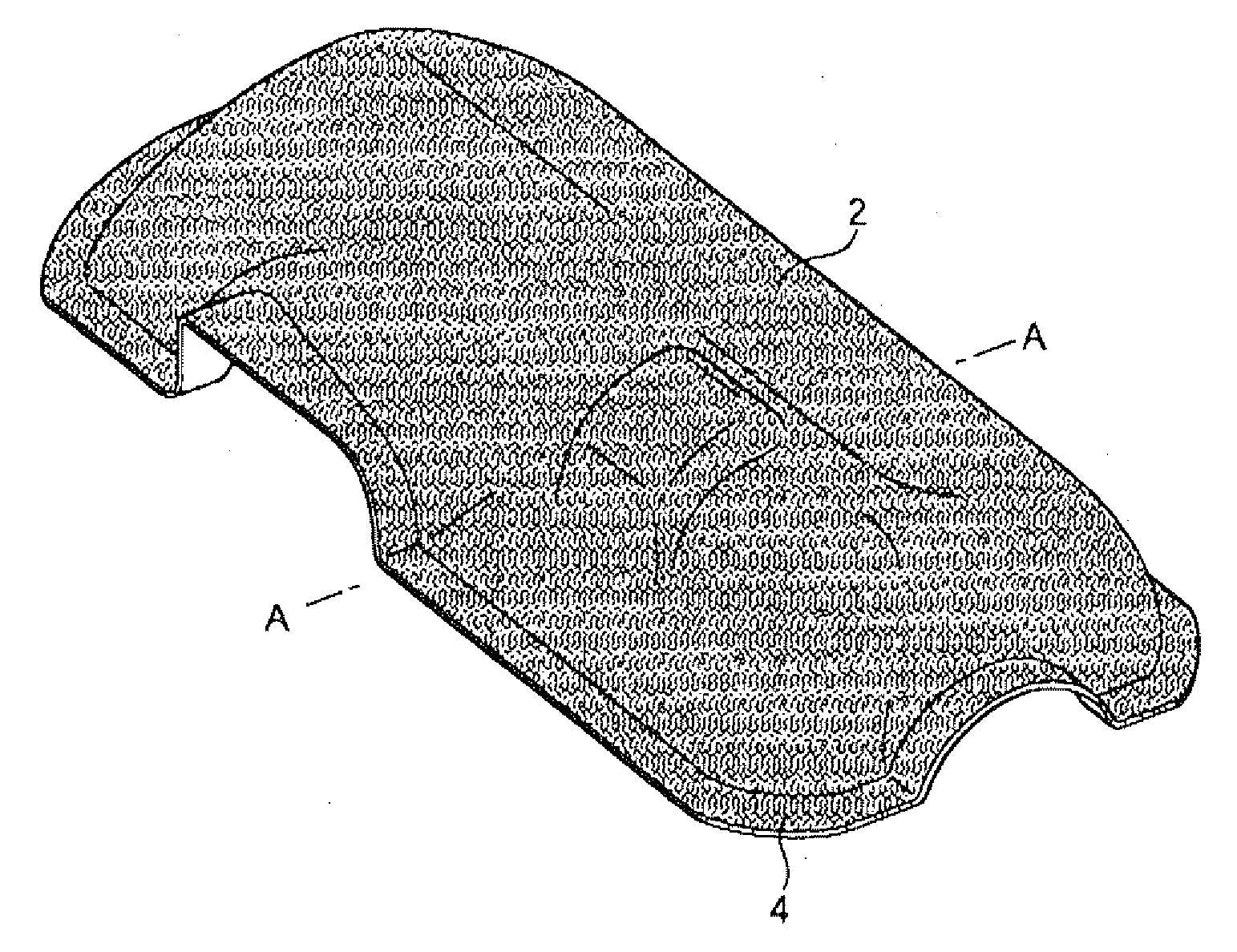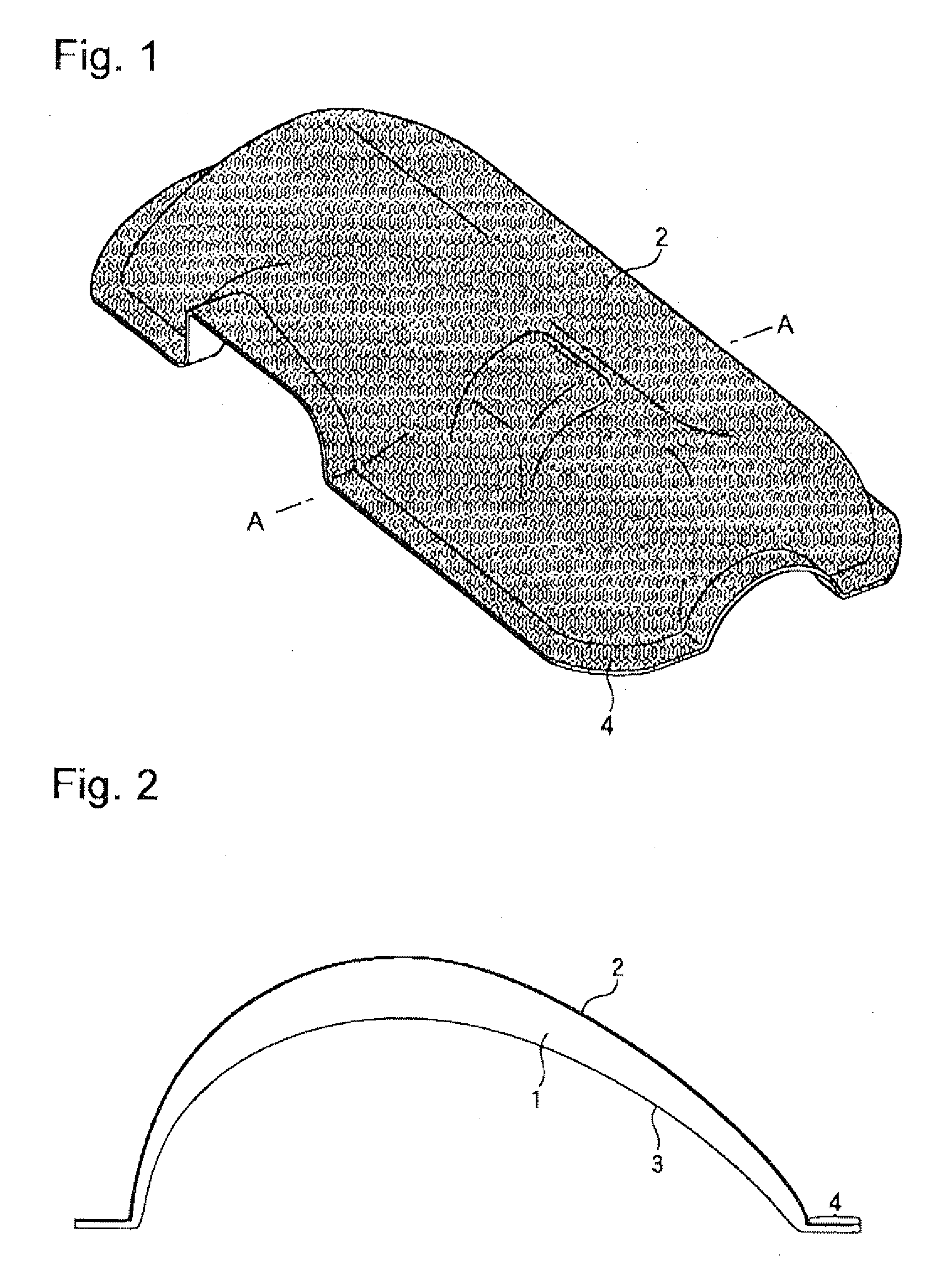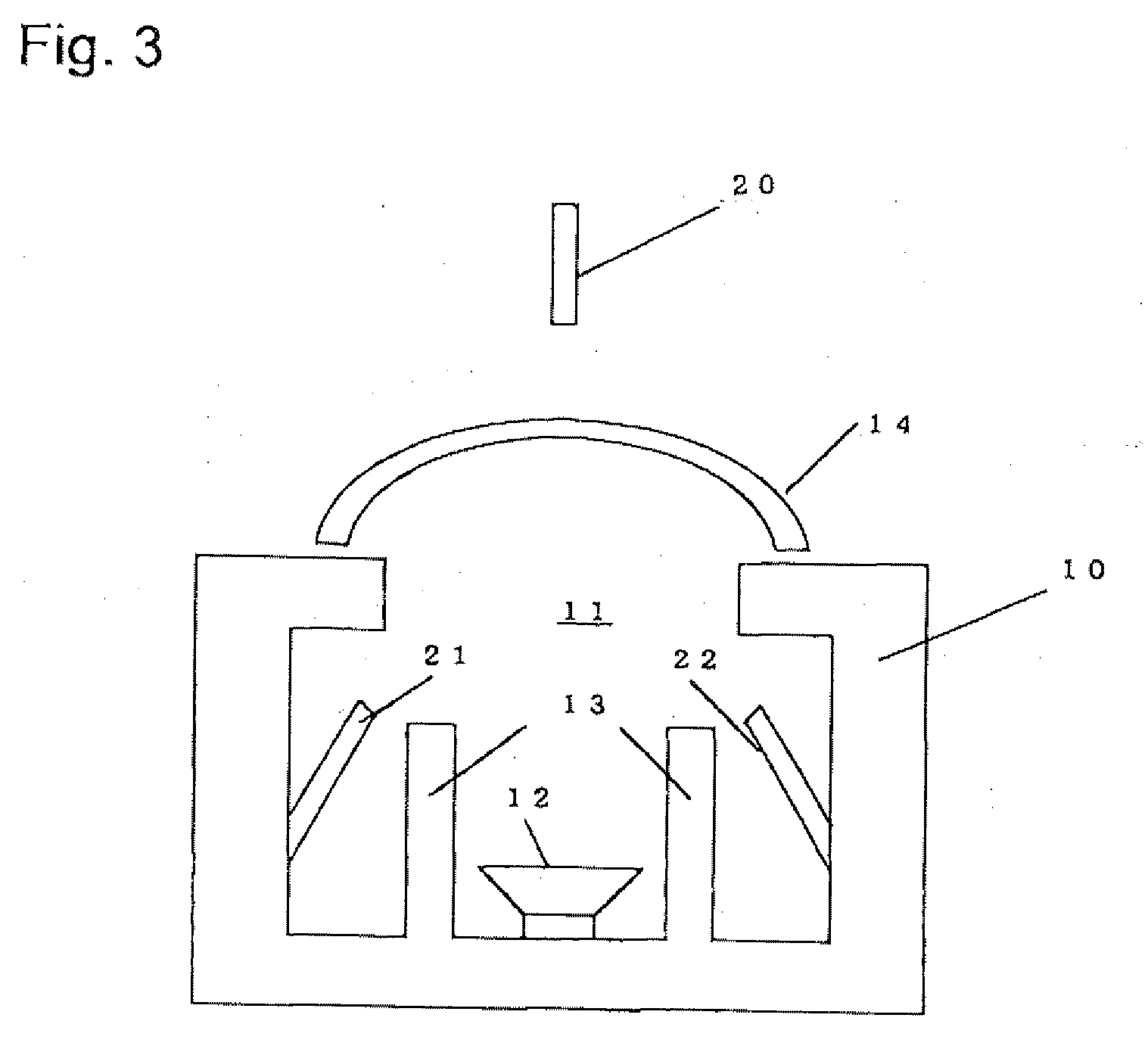Soundproof cover
a soundproof cover and cover technology, applied in the field of soundproof covers, can solve the problems of increasing noise levels, unable to achieve expected soundproof effects, and requiring rigid soundproof measures, so as to reduce standing waves, improve productivity, and reduce noise levels.
- Summary
- Abstract
- Description
- Claims
- Application Information
AI Technical Summary
Benefits of technology
Problems solved by technology
Method used
Image
Examples
example 1
[0041]As a skin material, a vinyl acetate emulsion (Bond H1500N manufactured by Konishi Co., Ltd., an aqueous solution having a solid content of 50%) was roller-coated on a nonwoven fabric (220NI-SP manufactured by Nippon Non-Woven Fabrics Co., Ltd., basis weight: 220 g / m2) and dried so as to form a coating of vinyl acetate in an amount of 400 g / m2 as a solid matter, whereby a skin material having a thickness of 1 mm and a total basis weight of 620 g / m2 was produced. When damping property of the skin material was measured by a dynamic viscoelasticity spectrometer, it was found that the material had a peak of loss modulus within the region of 20° C. to 80° C. Moreover, when sound-insulating performance was measured by a sound intensity (sound energy level) methods sound transmission loss (OA value between 100 Hz and 5 kHz) was about 21 dB. The value was larger than the sound transmission loss of a rigid sound-insulating material calculated from the mass law, about 18 dB, (the resin-m...
example 2
[0045]As a skin material, a moisture-curable urethane hot-melt resin (ARX-1288 manufactured by Nitta Gelatin Inc.) was roller-coated on a nonwoven fabric (220NI-SP manufactured by Nippon Non-Woven Fabrics Co., Ltd., basis weight: 220 g / m2) and cured under moisturization so as to form a coating of the urethane resin in an amount of 250 g / m2 as a solid matter, whereby a skin material having a thickness of 1 mm and a total basis weight of 470 g / m2 was manufactured. When damping property of the skin material was measured by a dynamic viscoelasticity spectrometer, it was found that the material had a peak of loss modulus within the region of 30° C. to 70° C. Moreover, when sound-insulating performance was measured by a sound intensity (sound energy level) method, sound transmission loss (OA value between 100 Hz and 5 kHz) was about 26 dB. The value was larger than the sound transmission loss of a rigid sound-insulating material calculated from the mass law, about 16 dB, (the resin-made s...
example 3
[0048]A soundproof cover was manufactured in the same manner as in Example 2 except that the basis weight of the sound-absorbing material was changed to 500 g / m2. When the soundproof performance of the soundproof cover was evaluated using a testing device shown in FIG. 3, the transmitted sound was found to be 78 dB and the reflected sound was found to be 90 dB.
PUM
 Login to View More
Login to View More Abstract
Description
Claims
Application Information
 Login to View More
Login to View More - R&D
- Intellectual Property
- Life Sciences
- Materials
- Tech Scout
- Unparalleled Data Quality
- Higher Quality Content
- 60% Fewer Hallucinations
Browse by: Latest US Patents, China's latest patents, Technical Efficacy Thesaurus, Application Domain, Technology Topic, Popular Technical Reports.
© 2025 PatSnap. All rights reserved.Legal|Privacy policy|Modern Slavery Act Transparency Statement|Sitemap|About US| Contact US: help@patsnap.com



